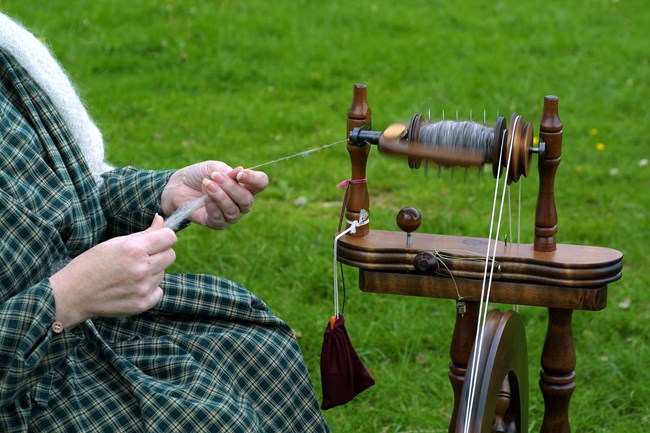Sheep In America
Sheep have been raised primarily for the weaver rather than for the butcher, and the art of spinning the fiber into yarn is an age-old process.
The colonists who came to America brought sheep with them or requested they be sent from Europe so that they could make wool clothing necessary to survive the cold harsh winters of North America.
The most important source of high-grade wool is the Merino sheep. The Spanish later improved upon the Merino, developed by the Romans through cross breeding. In 1802 the first Merinos were introduced into New England by Col. Humphreys, the Minister to Paris. By 1818, Merinos had become established at Hopewell Furnace as well. The “Merino Craze” of 1830 sent the price of fine wool soaring to over a dollar a pound, which ushered in a brief period of speculative sheep husbandry. Merinos have always been noted for their fine and beautiful wool, as are their descendants, the Merinos, Rambouillets, and Debouillets of today. The species is also hardy, gregarious, and long-lived.
The Merino breed has contributed more to the development of the present day sheep industry than any other.
Shear the Sheep
Sheep are usually shorn in the spring of the year. The removal of wool is a painstaking process. Even though it may look easy, care must be taken not to cut the sheep with the shears while trying to remove the fleece in a single piece. To accomplish this, the sheep must be held securely in place. In the 1800s sheep were shorn using a pair of hand shears, but today, most shearers use electric clippers. After the fleece is completely removed, the belly and leg wool, a poorer grade, is set aside from the rest. The remainder of the fleece is then folded up and tied with paper twine to be stored in a cool dry place for later processing.
Sort and Clean the Wool
The wool was sorted according to grade from coarse to fine. The coarser grades were used for rough goods such as horse blankets and carpeting. The finest of fibers were saved for clothing and household fabrics.
Removing the lanolin and dirt from the wool is known as scouring. The typical scouring mixture used during the 1800s was scalding water and urine. Today, a mixture of hot water and washing soda and/or soap is used. A small amount of the raw fleece was immersed and left in the water anywhere from 30 minutes to overnight depending on how dirty the wool was. When the wool looked clean, it was gently lifted from the water and allowed to drain. The wool was then placed in clean water to rinse. The rinse water was changed several times before the wool was rinsed clean. After the final rinse, the wool was placed on racks outdoors in the shade and allowed to dry completely. Any remaining burrs and matted lumps were then picked from the wool.
Carding and combing the wool is done to disentangle and align the fibers. Wooden hand cards with leather faces covered with metal hooks were used to pull the fibers straight. Reversing the cards and rolling the wool off the hooks removed the wool. The roll or “rolag” of wool was the full width of the card and was now ready to be spun. Combing the wool fibers was an alternative to carding. Wooden handled combs with two rows of long metal teeth were used. The short fibers were removed with the heated combs. The “sliver”, a quantity of long fibers combed perfectly straight, was spun into worsted yarn.

